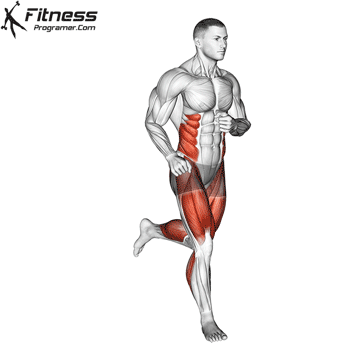Contents
For both beginner runners and elite athletes, slow running—sometimes called Zone 2 training—is a foundational method that supports endurance, fat metabolism, recovery, and injury prevention.
So, does slow running really work?
This article explores the science behind slow running, its physiological benefits, and how to integrate it effectively into your fitness routine.
What Is Slow Running?
Slow running refers to running at a low to moderate intensity, typically at a pace that:
- Feels comfortable
- Allows for conversation
- Keeps your heart rate in Zone 2 (approximately 60–70% of your maximum heart rate)
It’s not about pace—it’s about effort and training your body aerobically.

“You should finish a slow run feeling like you could keep going for much longer.” – American College of Sports Medicine (ACSM)
Key Benefits of Slow Running
1. Builds Aerobic Endurance
Running slowly improves the body’s ability to:
- Deliver oxygen to working muscles
- Develop more mitochondria (energy-producing structures in cells)
- Enhance capillary density for better blood flow
Scientific Insight: A study published in Frontiers in Physiology (2018) showed that submaximal endurance training increases aerobic efficiency, especially when performed consistently over 4–12 weeks.
2. Enhances Fat Metabolism
Slow running trains your body to:
- Burn fat as a primary fuel source
- Spare muscle glycogen for higher-intensity efforts
- Improve metabolic flexibility, which supports performance and fat loss
Note: Fat oxidation peaks at moderate intensities (~65% VO₂ max), making slow running ideal for efficient fat burning (Brooks & Mercier, 1994).
3. Reduces Injury Risk
Unlike sprinting or aggressive intervals, slow running:
- Places less strain on joints, muscles, and tendons
- Promotes active recovery
- Supports sustainable training volume
This makes it ideal for:
- Beginners
- Older adults
- Rehab patients
4. Improves Recovery and Consistency
Slow running is less taxing on the nervous system, allowing:
- Faster recovery between harder sessions
- Greater training frequency and mileage accumulation
- Improved mental relaxation and adherence to routine
5. Supports Performance in Racing and Speedwork
Paradoxically, slow running helps you get faster by building the engine behind higher-intensity efforts.
Elite runners do 70–80% of their weekly mileage at easy pace, following the 80/20 rule, which states:
- 80% of training should be low-intensity
- 20% of training should be moderate to high intensity
Study: Seiler & Kjerland (2006) concluded that endurance athletes improved performance more with polarized training (mostly slow, some fast) than moderate-intensity-only routines.
What Does Zone 2 Running Feel Like?
Zone 2 (aerobic zone) feels like:
- Easy breathing
- Light sweating
- Comfortable conversation
- Around 5–6 out of 10 on the RPE (Rate of Perceived Exertion) scale
Formula to estimate Zone 2 heart rate:
(220 – age) × 0.60 to 0.70
For example, a 40-year-old would aim for a heart rate of 108–126 bpm.
Slow Running vs. Fast Running: Key Differences
| Aspect | Slow Running | Fast Running |
|---|---|---|
| Intensity | Low to moderate (Zone 2) | High (Zones 4–5) |
| Fuel source | Primarily fat | Primarily glycogen |
| Stress on joints | Lower | Higher |
| Recovery time | Shorter | Longer |
| Purpose | Build base, burn fat, reduce fatigue | Improve speed, power, race prep |
How to Incorporate Slow Running Into Your Routine
Beginners
- 3–4 days per week of 20–40 minutes slow jogging or walk-run
- Focus on habit-building, not pace
Intermediate to Advanced
- Use slow runs as:
- Base-building sessions
- Recovery runs
- Long runs (1–2x/week at easy pace)
Training Tip
Track progress by monitoring pace at the same heart rate. As aerobic fitness improves, you’ll run faster at the same easy effort—a sign your conditioning is progressing.
Common Myths About Slow Running
| Myth | Reality |
|---|---|
| “It’s too easy to be effective.” | Low-intensity training builds the aerobic base that fuels speed |
| “You have to run fast to burn fat.” | Fat is used more efficiently at moderate intensities |
| “Slow running is for beginners only.” | Elite runners use slow runs for 80% of their mileage |
Conclusion
Yes, slow running absolutely works—not just for beginners, but for anyone serious about improving endurance, metabolic health, and long-term fitness. It enhances fat burning, supports recovery, and lays the foundation for more intense efforts. Whether you’re training for a race or just trying to stay healthy, slow running should be a key component of your weekly training.
Scientific References
- Brooks GA, Mercier J. Balance of carbohydrate and lipid utilization during exercise: the “crossover” concept. J Appl Physiol. 1994;76(6):2253–2261. https://doi.org/10.1152/jappl.1994.76.6.2253
- Seiler S, Kjerland GØ. Quantifying training intensity distribution in elite endurance athletes: is there evidence for an “optimal” distribution? Scand J Med Sci Sports. 2006;16(1):49–56. https://doi.org/10.1111/j.1600-0838.2004.00418.x
- Esteve-Lanao J, et al. The impact of training intensity distribution on the performance of highly trained endurance runners. J Strength Cond Res. 2007;21(3):943–949.
- American College of Sports Medicine. ACSM’s Guidelines for Exercise Testing and Prescription, 11th ed.



